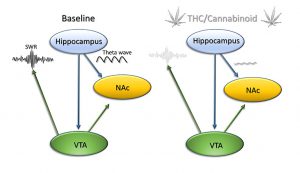 Reviews To Read – August 28, 2018.
Reviews To Read – August 28, 2018.
The increasing use of marijuana, its derivatives, and synthetic cannabinoids for medicinal and recreational purposes has increased interest in understanding the addictive potential of this class of molecules. Studies show that nearly 1 in 10 marijuana users will eventually show signs of dependence on the drug, which is recognized by a diagnosis of cannabis use disorder (CUD). The central molecule with psychotropic effects that sustains the use of cannabis is Δ9 -tetrahydrocannabinol (Δ9 -THC), and our knowledge of its effects, and those of other cannabinoids on brain function has expanded rapidly in the past two decades. However, there are also endogenous cannabinoid (endocannabinoid) systems that are extensively involved in controlling brain physiology and behavior. In this review article we examine roles for endogenous cannabinoids in shaping communication among neurons in cortical and subcortical brain circuits, and we discuss mechanisms in which Δ9 -THC interacts with the endocannabinoid systems to disrupt the synchronized activity of large groups of neurons. We then explore how a disrupted endocannabinoid system within brain reward circuits may lead to impaired learning and memory. Finally, we propose that disruption of cellular activity by exogenous cannabinoids in cortical and subcortical circuits may explain the difficulty in establishing ∆9-THC self-administration models in animals.
Cannabinoid disruption of learning mechanisms involved in reward processing. Journal Article
In: Learn Mem, vol. 25, no. 9, pp. 435–445, 2018, ISSN: 1549-5485 (Electronic); 1072-0502 (Linking).
